Cisco Nexus 5596UP User Manual

Data Sheet
Cisco Nexus 5548P, 5548UP, 5596UP, and 5596T
Switches
Latest Additions to the Cisco Nexus 5000 Series Switches
Cisco Nexus 5000 Series Switches Product Overview
Today’s data centers are increasingly filled with dense rack-mount and blade servers that host powerful multicore processors. The rapid increase in in-rack computing density and the increasing use of virtualization software combine to accelerate the demand for 10 Gigabit Ethernet and consolidated I/O: applications for which the Cisco Nexus® 5000 Series Switches are an excellent match. With low latency and choice of front-to-back or back-to-front cooling, copper or fiber access ports, and rear-facing data ports, the Cisco Nexus 5000 Series is designed for a broad range of physical, virtual, storage access, and high-performance computing environments, thus giving customers the flexibility to meet and scale their data center requirements in a gradual manner and at a pace that aligns with their business objectives.
The switch series, using cut-through architecture, supports line-rate 10 Gigabit Ethernet on all ports while maintaining consistently low latency independent of packet size and services enabled. It supports a set of network technologies known collectively as Data Center Bridging (DCB) that increases the reliability, efficiency, and scalability of Ethernet networks. These features allow the switches to support multiple traffic classes over a lossless Ethernet fabric, thus enabling consolidation of LAN, SAN, and cluster environments. Its ability to connect Fibre Channel over Ethernet (FCoE) to native Fibre Channel protects existing storage system investments while dramatically simplifying in-rack cabling.
In addition to supporting standard 10 Gigabit Ethernet network interface cards (NICs) on servers, the Cisco Nexus 5000 Series integrates with multifunction adapters called converged network adapters (CNAs) that combine the functions of Ethernet NICs and Fibre Channel host bus adapters (HBAs), making the transition to a single, unified network fabric transparent and consistent with existing practices, management software, and OS drivers. The switch series is compatible with integrated transceivers and Twinax cabling solutions that deliver cost-effective connectivity for 10 Gigabit Ethernet to servers at the rack level, eliminating the need for expensive optical transceivers. The Cisco Nexus 5000 Series portfolio also provides the flexibility to connect directly to servers using 10GBASE-T connections or fiber with Enhanced Small Form-Factor Pluggable (SFP+) transceivers.
The Cisco Nexus 5000 Series is designed for data center environments with cut-through technology that enables consistent low-latency Ethernet solutions, with front-to-back or back-to-front cooling, and with data ports in the rear, bringing switching into close proximity with servers and making cable runs short and simple. The switch series is highly serviceable, with redundant, hot-pluggable power supplies and fan modules. It uses data center-class Cisco® NX-OS Software for high reliability and ease of management.
© 2016 Cisco and/or its affiliates. All rights reserved. This document is Cisco Public Information. |
Page 1 of 31 |
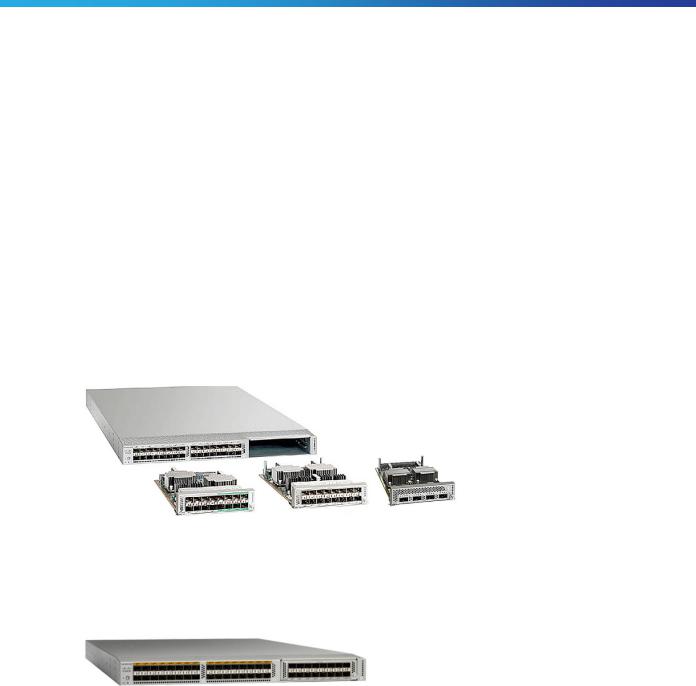
Cisco Nexus 5500 Platform Overview
In a constantly changing business environment, companies are calling upon their IT departments to help them reduce costs, improve productivity, and introduce new ways to interact with their customer base.
The Cisco Nexus 5500 platform extends the industry-leading versatility of the Cisco Nexus 5000 Series purposebuilt 10 Gigabit Ethernet data center-class switches and provides innovative advances toward higher density, lower latency, and multilayer services. The Cisco Nexus 5500 platform is well suited for enterprise-class data center server access-layer deployments across a diverse set of physical, virtual, storage-access, and high-performance computing (HPC) data center environments.
Cisco Nexus 5548P Switch
The Cisco Nexus 5548P Switch (Figure 1) is the first of the Cisco Nexus 5500 platform switches. It is a one-rack- unit (1RU) 10 Gigabit Ethernet and FCoE switch offering up to 960-Gbps throughput and up to 48 ports. The switch has 32 1/10-Gbps fixed SFP+ Ethernet and FCoE ports and one expansion slot.
Figure 1. Cisco Nexus 5548P Switch
Cisco Nexus 5548UP Switch
The Cisco Nexus 5548UP (Figure 2) is a 1RU 10 Gigabit Ethernet, Fibre Channel, and FCoE switch offering up to 960 Gbps of throughput and up to 48 ports. The switch has 32 unified ports and one expansion slot.
Figure 2. Cisco Nexus 5548UP Switch
Cisco Nexus 5596UP Switch
The Cisco Nexus 5596UP Switch (Figure 3) is a 2RU 10 Gigabit Ethernet, Fibre Channel, and FCoE switch offering up to 1920 Gbps of throughput and up to 96 ports. The switch has 48 unified ports and three expansion slots.
© 2016 Cisco and/or its affiliates. All rights reserved. This document is Cisco Public Information. |
Page 2 of 31 |
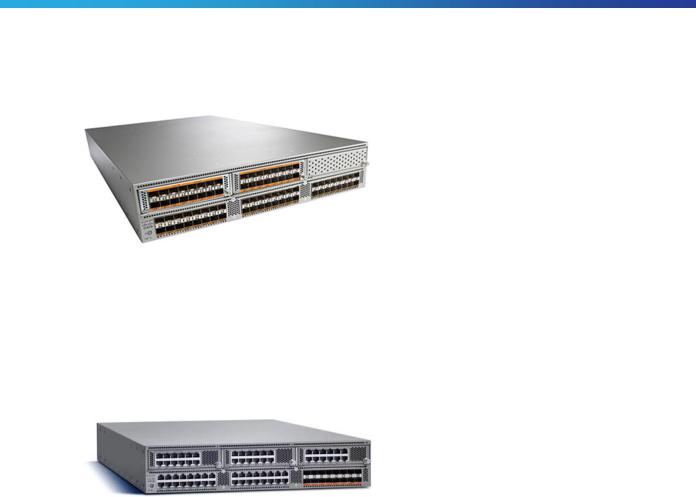
Figure 3. Cisco Nexus 5596UP Switch Configured with Three 16-Port Expansion Modules
Cisco Nexus 5596T Switch
The Cisco Nexus 5596T Switch (Figure 4) is a 2RU form factor, with 32 fixed ports of 10G BASE-T and 16 fixed ports of SFP+. The switch also supports up to three expansion slots. The switch supports 10 Gigabit Ethernet (fiber and copper), Fibre Channel, and FCoE, offering up to 1920 Gbps of throughput and up to 96 ports. The switch supports unified ports on all SFP+ ports. The 10G BASE-T ports support FCoE up to 30m distance with Category 6a and Category 7 cables.
Figure 4. Cisco Nexus 5596T Switch Configured with Three 12-Port 10G BASE-T Expansion Modules
Expansion Module Options for the Cisco Nexus 5548P, 5548UP, 5596UP, and 5596T Switches
The Cisco Nexus 5500 platform is equipped with expansion modules that can be used to increase the number of 10 Gigabit Ethernet, 40 Gigabit Ethernet and FCoE ports or to connect to Fibre Channel SANs with 8/4/2/1-Gbps Fibre Channel switch ports, or both.
The Cisco Nexus 5548P and 5548UP supports two expansion module, and the Cisco Nexus 5596UP and 5596T support four expansion modules from the following offerings (Figure 5):
●Ethernet module that provides sixteen 1/10 Gigabit Ethernet and FCoE ports using the SFP+ interface.
●Fibre Channel plus Ethernet module that provides eight 1/10 Gigabit Ethernet and FCoE ports using the SFP+ interface, and eight ports of 8/4/2/1-Gbps native Fibre Channel connectivity using the SFP+/SFP interface.
●Unified port module that provides up to sixteen 1/10 Gigabit Ethernet and FCoE ports using the SFP+ interface or up to sixteen ports of 8/4/2/1-Gbps native Fibre Channel connectivity using the SFP+ and SFP interfaces; the use of 1/10 Gigabit Ethernet or 8/4/2/1-Gbps Fibre Channel on a port is mutually exclusive but can be selected for any of the 16 physical ports per module.
●Four port QSFP Ethernet module that provides 4 40 Gigabit Ethernet ports using QSFP interface. Each QSFP 40GE port can only work in 4x10G mode and supports DCB and FCoE.
© 2016 Cisco and/or its affiliates. All rights reserved. This document is Cisco Public Information. |
Page 3 of 31 |
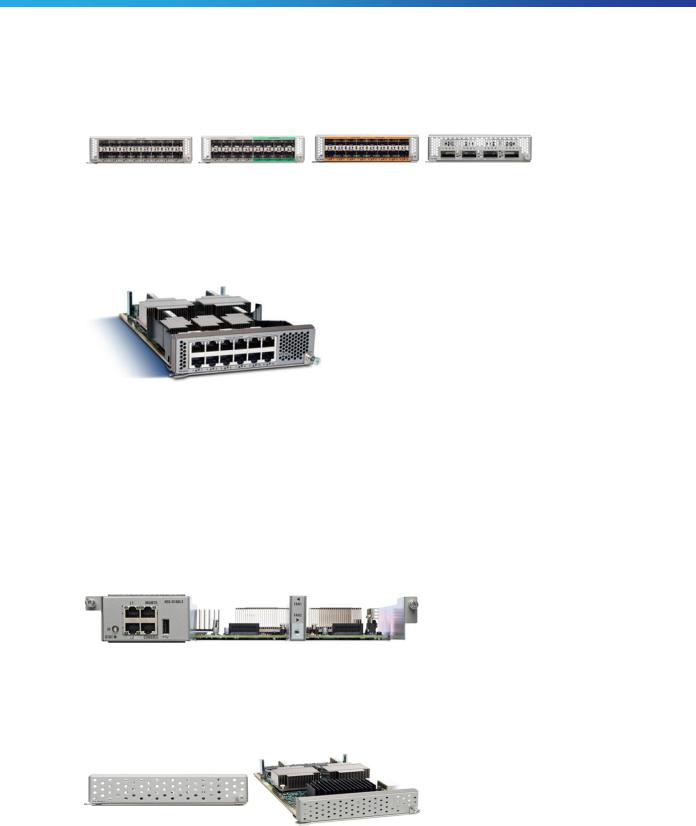
Figure 5. From Left to Right: 16-Port 1 and 10 Gigabit Ethernet and FCoE Module, 8-Port Fibre Channel Plus 8-Port 1 and 10 Gigabit Ethernet and FCoE Module, 16-Port Unified Port Module and 4 port QSFP Module.
The Cisco Nexus 5596T also supports another expansion module:
●Ethernet module (Figure 6) that provides twelve 10G BASE-T ports; The 10G BASE-T ports support FCoE up to 30m distance with Category 6a and Category 7 cables.
Figure 6. 12-Port 10G BASE-T Expansion Module (Front View and Side View)
Layer 3 Daughter Card and Expansion Module Options for Cisco Nexus 5548P, 5548UP, 5596UP, and 5596T Switches
●In addition to these expansion modules, the Cisco Nexus 5548P and 5548UP support a Layer 3 daughter card that can be ordered with the system or as a spare (field upgradable). This daughter card provides up to 160 Gbps of Layer 3 forwarding capability (240 million packets per second [mpps]) that can be shared by all 48 ports in the chassis. As shown in Figure 7, the Layer 3 daughter card does not take up one of the expansion slots on the rear of the chassis, but instead is installed by replacing the Layer 2 I/O module (N55-DL2) that is located on the front of the chassis.
Figure 7. Layer 3 Daughter Card on the Cisco Nexus 5548UP Switch
●In addition to these expansion modules, the Cisco Nexus 5596UP and 5596T support a Layer 3 module that provides up to 160 Gbps of Layer 3 forwarding capability (240 mpps) that can be shared by all the I/O ports in the chassis (Figure 8).
Figure 8. Layer 3 Module (Front View and Side View)
●Version 2 of Layer 3 daughter cards and expansion modules have enhanced capabilities that increase the host table size from 8000 to 16,000 entries, or multicast routes from 4000 to 8000 starting from software release Cisco NX-OS Software Release 5.2(1)N1(1b) and later.
© 2016 Cisco and/or its affiliates. All rights reserved. This document is Cisco Public Information. |
Page 4 of 31 |
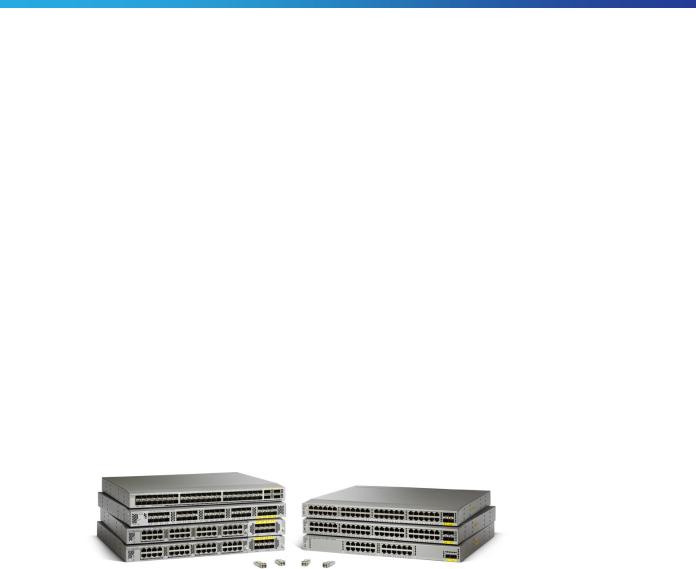
●Requires free of charge a base LAN license (N55-BAS1k9=) to be installed. This is included in the hardware purchase; however the license would need to be manually installed.
Cisco Nexus 2000 Series Fabric Extenders
The Cisco Nexus 2000 Series Fabric Extenders comprise a category of data center products that provide a universal server-access platform that scales across a multitude of 1 Gigabit Ethernet, 10 Gigabit Ethernet, unified fabric, rack, and blade server environments. The Cisco Nexus 2000 Series Fabric Extenders are designed to simplify data center architecture and operations by meeting the business and application needs of a data center.
Working in conjunction with Cisco Nexus switches, the Cisco Nexus 2000 Series Fabric Extenders offer a
cost effective and efficient way to support today’s Gigabit Ethernet environments while allowing easy migration to
10 Gigabit Ethernet, virtual machine-aware Cisco unified fabric technologies.
The Cisco Nexus 2000 Series design is aligned with the design of servers. It offers front-to-back or back-to-front cooling, compatibility with data center hot-aisle and cold-aisle designs, placement of all switch ports at the rear of the unit in close proximity to server ports, and accessibility of all user-serviceable components from the front panel. The Cisco Nexus 2000 Series is built for nonstop operation, with redundant hot-swappable power supplies and a hot-swappable fan tray with redundant fans. Its compact 1RU form factor takes up relatively little space, making it easy to incorporate into rack designs (Figure 9).
Figure 9. Cisco Nexus 2000 Series Fabric Extenders from Bottom Right to Top Left: Cisco Nexus 2224TP GE, 2248TP GE, 2248TP-E GE, 2232TM 10GE, 2232TM-E 10GE, 2232PP 10GE and 2248 PQ 10GE
The Cisco Nexus 2000 Series provides two types of ports: ports for end-host attachment (host interfaces) and uplink ports (fabric interfaces). Fabric Interfaces are differentiated with a yellow color for connectivity to the upstream parent Cisco Nexus switch.
Table 1 lists the Cisco Nexus 2000 Series Fabric Extenders. Fabric extenders can be mixed and matched to a parent switch to provide connectivity options.
|
Table 1. |
Cisco Nexus 2000 Series Specifications |
|
|
||
|
|
|
|
|
|
|
|
Description |
|
Specification |
Minimum Software Cisco NX- |
|
|
|
|
|
|
|
OS Release |
|
|
|
|
|
|
|
|
|
Cisco Nexus 2224TP |
24 |
100/1000BASE-T host interfaces and 2 10 Gigabit Ethernet fabric interfaces |
4.2(1)N2(1) |
|
|
|
|
|
(SFP+) |
|
|
|
|
|
|
|
|
|
|
|
Cisco Nexus 2248TP |
48 |
100/1000BASE-T host interfaces and 4 10 Gigabit Ethernet fabric interfaces |
4.2(1)N2(1) |
|
|
|
|
|
(SFP+) |
|
|
|
|
|
|
|
|
|
|
|
Cisco Nexus 2248TP-E |
48 |
100/1000BASE-T host interfaces and 4 10 Gigabit Ethernet fabric interfaces |
5.1(3)N1(1) |
|
|
|
|
|
(SFP+) [32MB Shared Buffer] |
|
|
|
|
|
|
|
|
|
|
|
Cisco Nexus 2232PP |
32 |
1/10 Gigabit Ethernet and FCoE host interfaces (SFP+) and 8 10 Gigabit |
4.2(1)N2(1) |
|
|
|
|
|
Ethernet and FCoE fabric interfaces (SFP+) |
|
|
|
|
|
|
|
|
|
|
|
Cisco Nexus 2248PQ |
48 |
1/10 Gigabit Ethernet and FCoE host interfaces (SFP+) and four QSFP+ |
6.0(2)N1(1) |
|
|
|
|
|
Gigabit Ethernet and FCoE fabric interfaces (QSFP+) |
|
|
|
|
|
|
|
|
|
|
|
Cisco Nexus 2232TM |
32 |
1/10 G BASE-T host interfaces and 8 10 Gigabit Ethernet (SFP+) Uplink |
5.0(3)N2(1) |
|
|
|
|
|
Module |
|
|
|
|
|
|
|
|
||
© 2016 Cisco and/or its affiliates. All rights reserved. This document is Cisco Public Information. |
Page 5 of 31 |
|||||
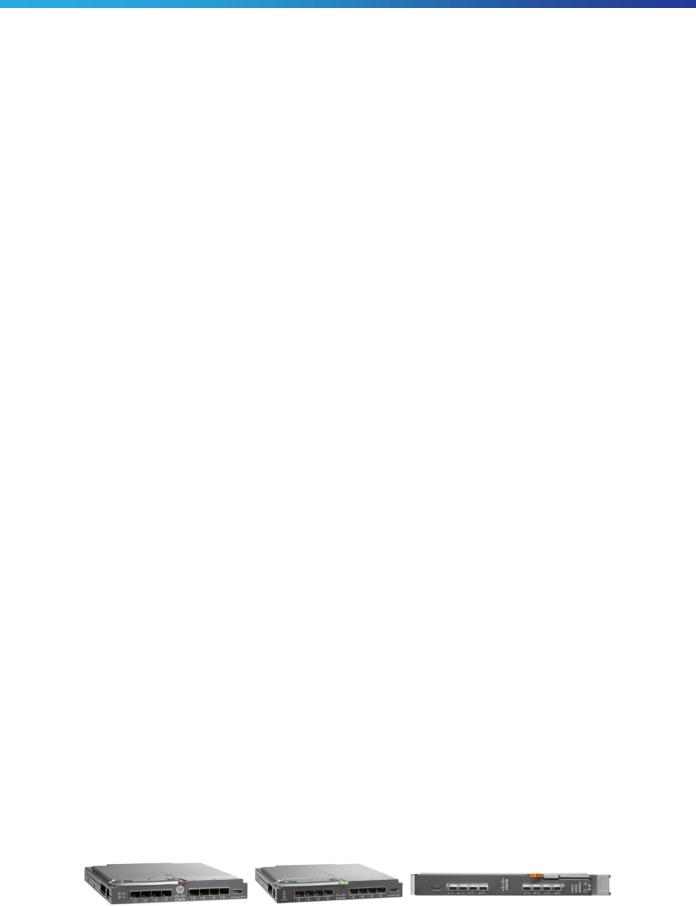
Description |
Specification |
Minimum Software Cisco NX- |
|
|
|
OS Release |
|
|
|
|
|
Cisco Nexus 2232TM-E |
32 1/10 G BASE-T host interfaces and 8 10 Gigabit Ethernet (SFP+) Uplink |
5.2(1)N1(1) |
|
|
Module (Lower power consumption and improved BER) |
|
|
|
|
|
|
Cisco Nexus B22HP |
16x 1/10 G BASE-KR internal host interfaces and 8 10 Gigabit Ethernet fabric |
5.0(3)N2(1) |
|
|
interfaces (SFP+) Network Interfaces |
|
|
|
|
|
|
Cisco Nexus B22F |
16x 10 G BASE-KR internal host interfaces and 8 10 Gigabit Ethernet fabric |
5.2(1)N1(1) |
|
|
interfaces (SFP+) Network Interfaces |
|
|
|
|
|
|
Cisco Nexus B22DELL |
16x 10 G BASE-KR internal host interfaces and 8 10 Gigabit Ethernet fabric |
6.0(2)N1(1) |
|
|
interfaces (SFP+) Network Interfaces |
|
|
|
|
|
The Cisco Nexus 2224TP, 2248TP, and 2248TP-E provide port density options for highly scalable 100-Mbps and Gigabit Ethernet connectivity. The Cisco Nexus 2232PP provides ease of migration from Gigabit Ethernet to 10 Gigabit Ethernet while supporting highly scalable 10 Gigabit environments.
The Cisco Nexus 2248TP-E Fabric Extender is a general-purpose 1 Gigabit Ethernet fabric extender with enhancements that target workloads such as large-volume databases, distributed storage, and video editing. Just like the Cisco Nexus 2248TP, the Cisco Nexus 2248TP-E also supports 48 100/1000BASE-T host facing ports and four 10 Gigabit Ethernet fabric interfaces.
The Cisco Nexus 2232TM-E Fabric Extender supports scalable 1/10GBASE-T environments, ease of migration from 1GBASE-T to 10GBASE-T, and effective reuse of existing structured cabling. It comes with an uplink module that supports eight 10 Gigabit Ethernet fabric interfaces. It is a superset of the Cisco Nexus 2232TM with the latest generation of 10GBASE-T PHY, enabling lower power and improved bit error rate (BER). The Cisco Nexus 2232TM-E supports DCB and LAN and SAN consolidation.
The Cisco Nexus 2232PP 1/10GE Fabric Extender is the ideal platform for migration from Gigabit Ethernet to 10 Gigabit Ethernet and unified fabric environments. It supports FCoE and a set of network technologies known collectively as Data Center Bridging (DCB) that increase the reliability, efficiency, and scalability of Ethernet
networks. These features allow the switches to support multiple traffic classes over a lossless Ethernet fabric, thus enabling consolidation of LAN, SAN, and cluster environments.
The Cisco Nexus 2248PQ 10 Gigabit Ethernet Fabric Extender is the newest member of the Cisco Nexus Fabric Extender Family. It supports highdensity 10 Gigabit Ethernet environments and has 48 forty-eight 1/10 Gigabit Ethernet SFP+ host ports and 4 QSFP+ fabric ports (16 x 10 GE fabric ports). QSFP+ connectivity simplifies cabling while lowering power and solution cost. The Cisco Nexus 2248PQ 10GE Fabric Extender supports FCoE and a set of network technologies known collectively as Data Center Bridging (DCB) that increase the reliability, efficiency, and scalability of Ethernet networks. These features allow support for multiple traffic classes over a lossless Ethernet fabric, thus enabling consolidation of LAN, storage area network (SAN), and cluster environments.
The Cisco Nexus B22HP Fabric Extender (Figure 10) for HP Blade System is the first 10 Gigabit Ethernet and FCoE fabric extender in a third-party blade chassis format. It is targeted at customers who already own HP blade servers and makes it easier for them to integrate with the Cisco Nexus data center fabric.
Figure 10. From Left to Right: Cisco Nexus B22HP Fabric Extender, Cisco Nexus B22F Fabric Extender, Cisco Nexus B22DELL Fabric Extender
© 2016 Cisco and/or its affiliates. All rights reserved. This document is Cisco Public Information. |
Page 6 of 31 |

The Cisco Nexus B22F (Figure 10) Fabric Extender for Fujitsu BladeSystem is the 10 Gigabit Ethernet and FCoE fabric extender in a third-party blade chassis format. It is targeted at customers who already own Fujitsu blade servers and makes it easier for them to integrate with the Cisco Nexus data center fabric.
The Cisco Nexus B22DELL (Figure 10) Fabric Extender for Dell Blade System is the 10 Gigabit Ethernet and FCoE fabric extender in a third-party blade chassis format. It is targeted at customers who already own Dell blade servers and makes it easier for them to integrate with the Cisco Nexus data center fabric.
Cisco Nexus 2000 Series Fabric Extenders connect to a parent Cisco Nexus switch through their fabric links using CX1 copper cable, short-reach or long-reach optics, and the cost-effective Cisco Fabric Extender Transceivers. Cisco Fabric Extender Transceivers are optical transceivers that provide a highly cost-effective solution for connecting the fabric extender to its parent switch.
Cisco Nexus 2000 Series and Cisco Nexus 5000 Series Deployment Scenarios
The fabric extenders can be used in the following deployment scenarios:
●Rack servers with 100 Megabit Ethernet, Gigabit Ethernet, or 10 Gigabit Ethernet network interface cards (NICs); the fabric extender can be physically located at the top of the rack and the Cisco Nexus 5000 Series switch can reside in the middle or at the end of the row, or the fabric extender and the Cisco Nexus 5000 Series switch can both reside at the end or middle of the row.
●Mixed Gigabit Ethernet and 10 Gigabit Ethernet environments in which rack servers are running at either speeds in the same rack or in adjacent racks.
●10 Gigabit Ethernet and FCoE deployments, using servers with converged network adapters (CNAs) for unified fabric environments with the Cisco Nexus 2232PP.
●1/10 Gigabit Ethernet BASE-T server connectivity with ease of migration from 1 to 10GBASE-T and effective reuse of structured cabling.
●Server racks with integrated lights-out (iLO) management, with 100 Megabit Ethernet or Gigabit Ethernet management and iLO interfaces.
●Gigabit Ethernet and 10 Gigabit Ethernet blade servers with pass-through blades.
●Low-latency, high-performance computing environments.
●Virtualized access.
●Cisco Nexus 2000 Series Fabric Extenders can single or dual-connect (using Enhanced vPC) to two upstream Cisco Nexus 5500 platform switches (Figure 11).
●Servers or end host can connect to single or dual Cisco Nexus 2000 Series Fabric Extenders using NIC teaming (Figure 11) when the parent Cisco Nexus 5500 platform has Enhanced vPC enabled.
© 2016 Cisco and/or its affiliates. All rights reserved. This document is Cisco Public Information. |
Page 7 of 31 |
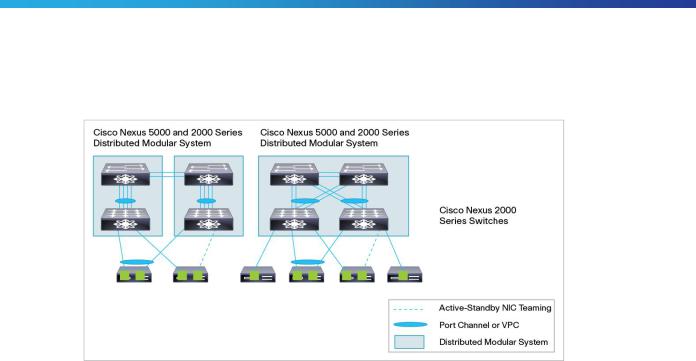
Figure 11. Deployment Scenario
Efficient Transceiver and Cabling Options
The Cisco Nexus 5500 platform supports a wide variety of 1 and 10 Gigabit Ethernet connectivity options using Cisco 10GBASE SFP+ modules.
In addition, the Cisco Nexus 5500 platform supports 1 Gigabit Ethernet connectivity options using 1GBASE SFP modules, 8/4/2 -Gbps Fibre Channel SFP+ and 4/2/1-Gbps Fibre Channel SFP interfaces are supported with expansion module options.
Table 2 lists the supported transceiver options.
|
Table 2. |
Cisco Nexus 5500 Platform Transceiver Support Matrix |
|
|
|
|
|
|
|
|
|
|
Cisco SFP |
|
Description |
|
|
|
|
|
|
|
|
|
FET-10G |
|
10-Gbps SFP+ module for Cisco Nexus 2000 Series to Cisco Nexus 5000 Series connectivity |
|
|
|
|
|
|
|
|
|
Cisco SFP-10G-SR |
10GBASE-SR SFP+ module (multimode fiber [MMF]) |
|
|
|
|
|
|
|
|
|
|
Cisco SFP-10G-LR |
10GBASE-LR SFP+ module (single-mode fiber [SMF]) |
|
|
|
|
|
|
|
|
|
|
Cisco SFP-10G-ER |
10GBASE-ER-SFP+ module (single-mode fiber[SMF]) |
|
|
|
|
|
|
|
|
|
|
Cisco SFP-H10GB-CU1M |
10GBASE-CU SFP+ cable 1m (Twinax cable) |
|
|
|
|
|
|
|
|
|
|
Cisco SFP-H10GB-CU3M |
10GBASE-CU SFP+ cable 3m (Twinax cable) |
|
|
|
|
|
|
|
|
|
|
Cisco SFP-H10GB-CU5M |
10GBASE-CU SFP+ cable 5m (Twinax cable) |
|
|
|
|
|
|
|
|
|
|
Cisco SFP-H10GB-ACU7M |
10GBASE-CU SFP+ cable 7m (active Twinax cable) |
|
|
|
|
|
|
|
|
|
|
Cisco SFP-H10GB-ACU10M |
10GBASE-CU SFP+ cable 10m (active Twinax cable) |
|
|
|
|
|
|
|
|
|
|
Cisco GLC-T |
|
1000BASE-T SFP |
|
|
|
|
|
|
|
|
|
GLC-ZX-SM |
|
1000BASE-ZX SFP transceiver module for SMF, 1550-nm wavelength, dual LC/PC connector |
|
|
|
|
|
|
|
|
|
Cisco GLC-SX-MM |
Gigabit Ethernet SFP, LC connector SX transceiver (MMF) |
|
|
|
|
|
|
|
||
|
Cisco GLC-SX-MMD |
Gigabit Ethernet SFP, LC connector SX transceiver (MMF), extended temperature range and digital optical |
|
||
|
|
|
monitoring (DOM) |
|
|
|
|
|
|
|
|
|
Cisco GLC-LH-SM |
Gigabit Ethernet SFP, LC connector LX/LH transceiver (SMF) |
|
|
|
|
|
|
|
||
|
Cisco GLC-LH-SMD |
Gigabit Ethernet SFP, LC connector LX/LH transceiver (SMF), extended temperature range and digital optical |
|
||
|
|
|
monitoring (DOM) |
|
|
|
|
|
|
|
|
|
Cisco SFP-GE-T |
1000BASE-T SFP, extended temperature range |
|
|
|
|
|
|
|
|
|
© 2016 Cisco and/or its affiliates. All rights reserved. This document is Cisco Public Information. |
Page 8 of 31 |
||||

Cisco SFP |
Description |
|
|
|
|
Cisco SFP-GE-S |
Gigabit Ethernet SFP, LC connector SX transceiver (MMF), extended temperature range and digital optical |
|
|
monitoring (DOM) |
|
|
|
|
Cisco SFP-GE-L |
Gigabit Ethernet SFP, LC connector LX/LH transceiver (SMF), extended temperature range and DOM |
|
|
|
|
Cisco DS-SFP-FC4G-SW |
4-Gbps Fibre Channel SW SFP, LC (for Fibre Channel expansion module ports) |
|
|
|
|
Cisco DS-SFP-FC4G-LW |
4-Gbps Fibre Channel LW SFP, LC (for Fibre Channel expansion module ports) |
|
|
|
|
Cisco DS-SFP-FC8G-SW |
8-Gbps Fibre Channel SW SFP+, LC (for Fibre Channel expansion module ports) |
|
|
|
|
Cisco DS-SFP-FC8G-LW |
8-Gbps Fibre Channel LW SFP+, LC (for Fibre Channel expansion module ports) |
|
|
|
The high bandwidth of 10 Gigabit Ethernet poses challenges to transmissions that are met by the transceiver and cabling options supported by the Cisco Nexus 5500 platform.
The platform supports an innovative Twinax copper cabling solution that connects to standard SFP+ connectors for in-rack use, and optical cabling for longer cable runs (Table 3).
●For in-rack or adjacent-rack cabling, the Cisco Nexus 5500 platform supports SFP+ direct-attach
10 Gigabit Ethernet copper, an innovative solution that integrates transceivers with Twinax cables into an energy-efficient, low-cost, and low-latency solution. SFP+ direct-attach 10 Gigabit Twinax copper cables use only 0.1 watt (W) of power per transceiver and introduce only approximately 0.25 microsecond of latency per link.
●For longer cable runs, the Cisco Nexus 5500 platform supports multimode, short-reach optical SFP+ transceivers. These optical transceivers use approximately 1W per transceiver and have a latency of less than 0.1 microsecond.
Table 3. The Cisco Nexus 5500 Platform Supports SFP+ Direct-Attach 10 Gigabit Copper for In-Rack Cabling, and Optical Solutions for Longer Connections (Ethernet Only)
Connector (Media) |
Cable |
Distance |
Power (Each Side) |
Transceiver Latency (Link) |
Standard |
|
|
|
|
|
|
|
|
SFP+ CU copper |
Twinax |
5m |
Approximately 0.1W |
Approximately 0 microsecond |
SFF 8431 |
|
|
|
|
|
|
|
|
SFP+ ACU copper |
Active Twinax |
7m |
Approximately 0.5W |
Approximately 0.1 microsecond |
SFF 8461 |
|
|
|
10m |
|
|
|
|
|
|
|
|
|
|
|
SFP+ SR MMF and SR |
MMF (OM2) |
82m |
1W |
Approximately 0.1 microsecond |
IEEE 802.3ae |
|
|
MMF (OM3) |
300m |
|
|
|
|
|
|
|
|
|
|
|
SFP+ LR |
SMF |
10Km |
1W |
Approximately 0.1 microsecond |
IEEE 802.3ae |
|
|
|
|
|
|
|
|
SFP+ ER |
SMF |
40Km |
1.5W |
Approximately 0.1 microsecond |
IEEE 802.3ae |
|
|
|
|
|
|
|
Features and Benefits
The comprehensive feature sets of the Cisco Nexus 5500 platform make it well suited for top-of-rack, middle-of- row, or end-of-row data center access-layer applications. The platform switches protect investments in data center racks with standards-based 10 Gigabit Ethernet and FCoE features and virtual machine awareness features that allow IT departments to consolidate networks based on their own requirements and timing. The combination of higher port density, lossless Ethernet, wire-speed performance, and very low latency makes the switch platform well suited for meeting the growing demand for 10 Gigabit Ethernet that can support a common Ethernet-based fabric in enterprise and service provider data centers, protecting enterprises’ investments. The switch platform provides sufficient port density to support single and multiple racks fully populated with blade and rack-mount servers.
© 2016 Cisco and/or its affiliates. All rights reserved. This document is Cisco Public Information. |
Page 9 of 31 |

●Built for today’s data centers, the switches are designed just like the servers they support. Ports and power connections are at the rear, close to server ports, helping keep cable lengths as short and efficient as possible, delivering benefits traditionally offered on blade servers to rack servers as well. Hot-swappable power and fan modules can be accessed from the front panel, where status lights offer an at-a-glance view of switch operation. Front-to-back or back-to-front cooling is consistent with server designs, supporting efficient data center hotand cold-aisle designs. Serviceability is enhanced with all customer-replaceable units accessible from the front panel. The use of SFP+ ports offers increased flexibility, enabling use of a range of interconnect solutions, including copper Twinax cable for short runs and fiber for long runs.
●DCB enables Ethernet fabrics to support lossless transmission to increase network scalability, support I/O consolidation, ease management of multiple traffic flows, and optimize performance. Although SAN consolidation requires only the lossless fabric provided by the Ethernet Pause mechanism, the Cisco Nexus 5500 platform provides additional features that create an even more easily managed, high-performance, unified network fabric. DCB features are summarized in Table 4 and supported by the Cisco Nexus 5500 platform.
Table 4. |
DCB Features and Benefits |
|
|
|
|
Feature |
|
Business Benefit |
|
|
|
Priority Flow Control (PFC) |
● Simplifies management of multiple traffic flows over a single network link |
|
|
|
● Creates lossless behavior for Ethernet by allowing class-of-service (CoS)-based flow control |
|
|
|
Enhanced Transmission Selection |
Enables consistent management of quality of service (QoS) at the network level by providing consistent |
|
(ETS) |
|
scheduling of different traffic types (IP, storage, etc.) |
|
|
|
Data Center Bridging Exchange |
Simplifies network deployment and reduces configuration errors by providing auto negotiation of DCB |
|
(DCBX) Protocol |
features between the NIC and the switch and between switches |
|
|
|
|
●FCoE is a standards-based upper-layer protocol that maps the Fibre Channel Protocol (FCP) and services onto Layer 2 Ethernet. It is a straightforward encapsulation of Fibre Channel within Ethernet that preserves existing Fibre Channel network management models and tools, helping protect investments in software and staff training.
●Cisco unified fabric consolidates all data center I/O onto Layer 2 Ethernet. Unified fabric reduces capital and operating costs by reducing the number of server adapters, cables, and upstream switches needed. All I/O (LAN, SAN, and cluster) typically is consolidated onto two Ethernet links. DCB and FCoE enable the incorporation of Fibre Channel frames into a unified fabric, facilitating wire-once strategies in which all servers become capable of SAN connection. A standard and uniform approach to I/O enhances server and storage consolidation strategies. The Cisco Nexus 5500 platform also connects to existing native Fibre Channel networks, protecting current investments in storage networks. Additionally, the Cisco Nexus 5500 platform attaches to directly connected FCoE and Fibre Channel storage devices and supports multi-tiered unified network fabric connect directly over FCoE.
●Unified ports allow any capable port to take on the character of 1 and 10 Gigabit Ethernet, SAN and LAN shared on 10 Gigabit Ethernet, or 8/4/2/1-Gbps Fibre Channel. Unified ports give the user flexibility in choosing SAN and LAN port options consistent with the virtualized data center and offer a migration path to FCoE for those users not yet ready to make the move from native Fibre Channel.
●Energy efficiency achieved through the use of the Cisco Nexus 5500 platform helps data centers operate within their space, power, and cooling parameters while reducing their carbon footprints. Every network link at the rack level requires adapters, switches, and transceivers, all of which consume power. I/O consolidation reduces energy consumption by eliminating the need for separate Fibre Channel adapters, cables, and switches.
© 2016 Cisco and/or its affiliates. All rights reserved. This document is Cisco Public Information. |
Page 10 of 31 |
